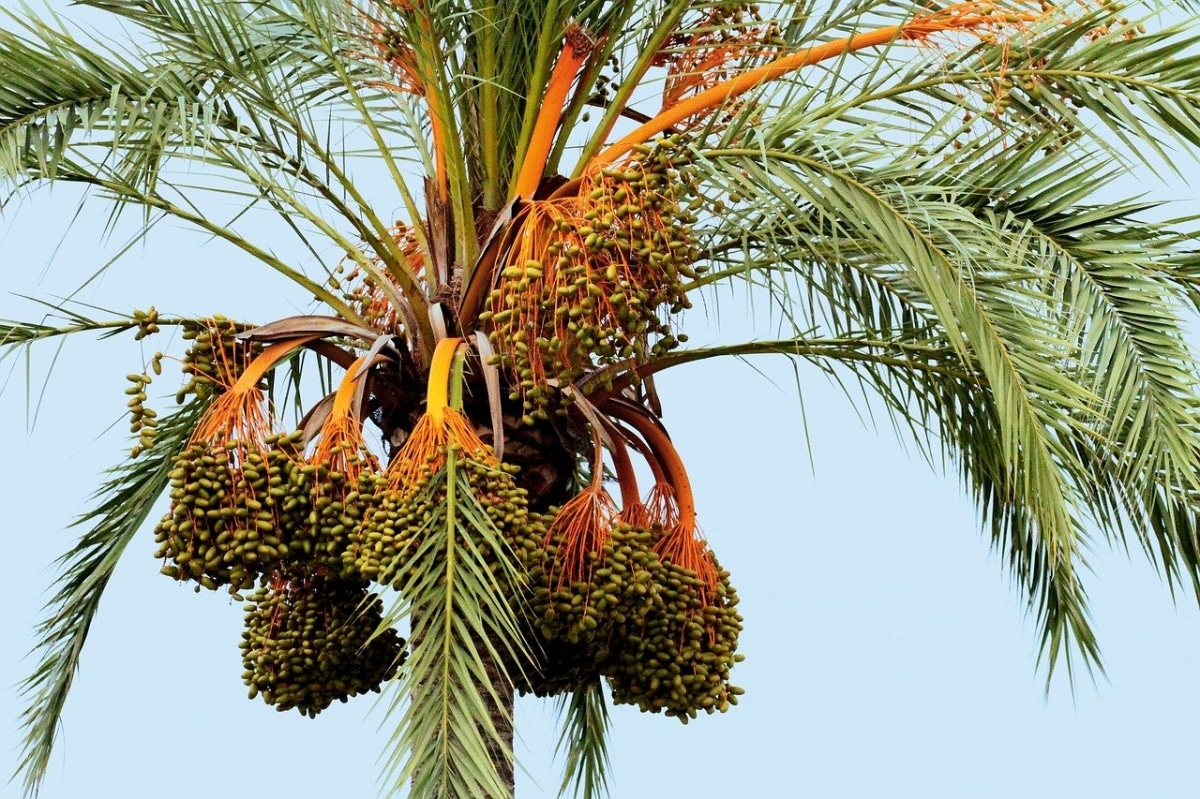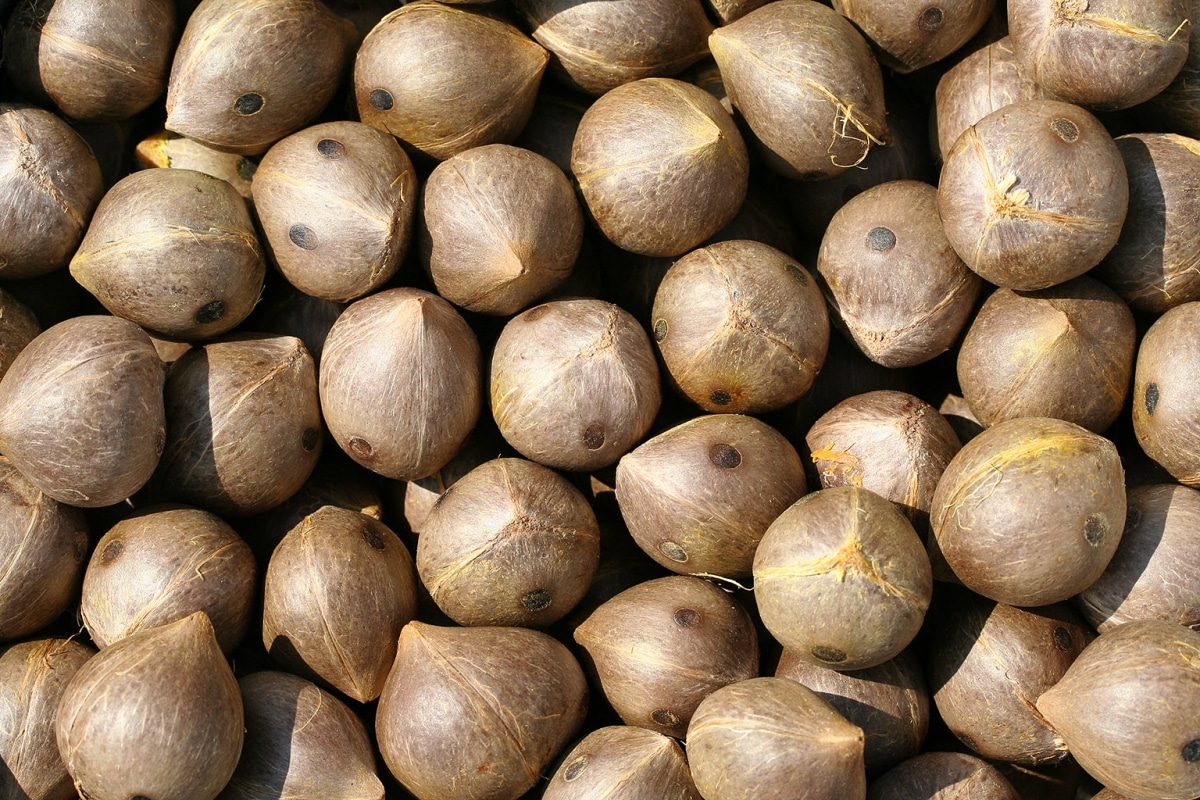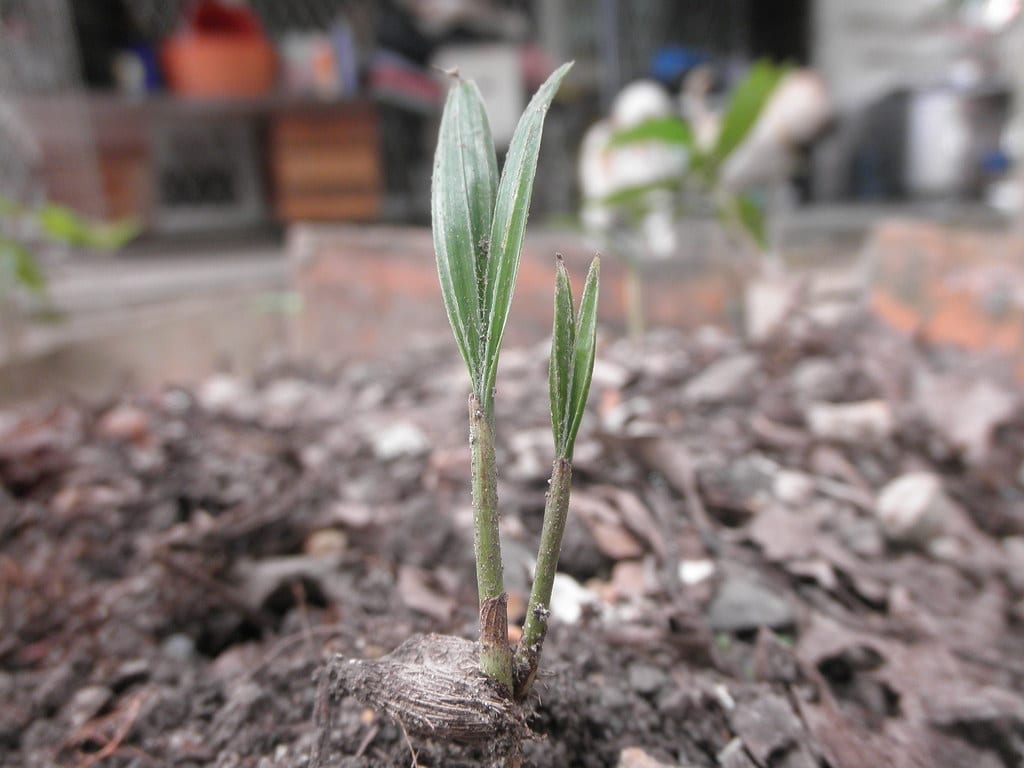
When the weather is good, there are many species of palm trees that begin to bloom, or whose fruits finish maturing. The seeds are the result of pollination, and that's the method that flowering plants (called angiosperms) use to reproduce. There are some palm trees that can reproduce asexually, that is, by separating the basal shoots from the mother plant. This technique can only be carried out in multicaule species, such as Phoenix reclines, raphis excelsa, or the Dypsis lutescens, although it is difficult.
So, if you want to have one in a pot or in the garden at a low price, even free, we are going to tell you how palm trees reproduce, both by seeds and cuttings. Take note of these tips and tricks to increase your chances of success.
Reproduction by seeds

Image - Flickr / Nuytsia @ Tas // Palm tree seeds Jubaea chilensis
In nature, even in gardens or parks, palm trees have no difficulty getting their flowers to pollinate, since the fauna willing to carry out this work is more than enough. The problem can arise when we only have a specific species within a 2-3 km radius. In this case, it could come to fruition, but the seed would not be fertile and it would not serve us.
To check the viability of the seeds, put them in a container with water at room temperature for 24 hours. Those that have sunk are those that you can sow, whereas those that float will be discarded. One trick to guarantee that they will germinate is to collect them directly from the palm tree as soon as we see that some begin to fall to the ground. Of course, that is not always possible, so if we buy them, it is important that they are acquired in specialized stores.
Step by step
Once at home, they can be sown in individual seedbeds, trays, previously washed milk containers, ... well, in anything you can think of. Do not forget to maintain a certain degree of humidity in the substrate so that they germinate without difficulty. These are the steps to follow:
- Prepare the seedbed: this must have a hole in its base so that the water can come out, and it must also be clean. If you use milk containers for example, wash them before with water and dish soap.
- Fill it with substrate: coconut fiber (for sale here), soil for seedlings (for sale here), a universal substrate containing perlite, ... any of these substrates will allow future palm trees to grow normally.
- Water: before sowing the seeds, you have to moisten the substrate. This way, you make sure that it will be very moist.
- Sow the seeds: now yes, place them on the ground and bury them a little. If they measure a centimeter deep, for example, put a thin layer (maximum one centimeter) of substrate on top. In addition, they must be separated from each other; in fact, if the seedbed is 10 centimeters in diameter, the ideal is that there are about 2 or 3 seeds at most.
- Place the seedbed near a heat sourcePalm trees need a temperature of about 20-25ºC to germinate. For this reason, it is advisable to sow in summer.
How long do they take to germinate?
It will depend a lot on the species of palm and how new the seed is. There are some that take a few days, but there are others that take much longer. Therefore, below we will tell you how long the most common varieties need as long as their seeds are fresh:
- Archontophoenix Alexandrae.: between 2 and 4 weeks. More information.
- Archontophoenix cunninghamiana: ditto.
- butia capitata: 1-2 months.
- butia odorata: ditto.
- Chamaerops humilis (palmetto): about 2 weeks.
- Cocos nucifera (coconut tree): between 2 and 4 weeks. More information.
- Dypsis lutescens (areca): ditto.
- Howea forsteriana (kentia): between 3 and 4 months.
- Jubaea chilensis: 3-4 months.
- Phoenix canariensis (Canary Island palm): from 1 week to 2 months.
- Phoenix dactylifera (datebook): idem.
- Washingtonia will spin (fan leaf palm): 1 week.
- Robust Washingtonia (fan leaf palm): ditto. More information.

Reproduction by cuttings

Image - Wikimedia / Krzysztof Ziarnek, Kenraiz
La reproduction by cuttings or asexual in palm trees it is not widely used in gardening, because the probability of success is low, and it is necessary to have control of the climatic conditions at all times so that everything goes well. Still, and as a curiosity, let's see what it consists of:
- With a previously disinfected handsaw, a cut is made as close as possible to the main trunk. Afterwards, a healing paste is applied to prevent the entry of fungi into the palm tree.
- Then, in a greenhouse that has the necessary equipment to control humidity (between 40 and 60%) and temperature (keeping it at around 20º), the cutting impregnated with rooting hormones is planted in a pot with substrate that facilitates drainage. An appropriate mix would be 60% black peat + 30% perlite + 10% worm castings, although perlite alone is also used.
Palm cuttings rarely root. The problem is that they are very sensitive to rot, and fungi attack them in a very short time. That is why this is a breeding method that is used more by experts.
What palm trees can be multiplied by cuttings?
The only palm trees that can be reproduced in this way are those that produce several logs, how are you:
- areca triandra
- Chamaerops humilis
- Dypsis lutescens
- Dypsis cabadae
- Phoenix dactylifera
- Phoenix reclines (more information)
But, we insist, the best way to multiply a palm tree is by sowing the seeds. It takes longer at times, depending on the species, but it's worth it.
What do you think?
Hello. Yesterday a truck accident started my dragon
And now I have the trunk with roots on one side and the crown is also broken on the other. It is 2 m tall and I don't know what to do. Had he thought of putting healing on both wounds and planting the trunk on one side and the crown on the other, or both? Or I just plant the trunk to see if leaves come out. Thanks
Hello Cris.
Put healing paste on the trunk to seal the wound well, and rooting hormones at the base of the -now- cutting. On the one hand, with time the trunk will grow new leaves, and on the other, the cutting has many possibilities to root. Plant it in a pot, with a very porous substrate (70% perlite and 30% black peat), and place it in semi-shade. Watering it twice a week, or three times if it's very hot, will soon emit roots emit.
Good luck!
I'm from Uruguay. In front of my house and on the sidewalk there is a huge tree and there below the root, a type of palm was born that very common and that I think is called (areca) was quite grown about 50 cm. I tried to remove it to take it to a pot, but I could not scaral it with the root, I made an inclined cut and put it in water. I am going to plant it, but what chances do I have that it takes root and does not die! Please someone to help me is beautiful and I am very sorry that it does not have positive results. I have it in water and I hope they answer me to taste it. Thank you. today January 5.
Hi Gladys.
Unfortunately, it is very difficult for palm cuttings to emit roots. You can put rooting hormones in it and place it in an area where it won't get direct sun, but it's complicated.
Still, good luck!
Hi, I'm from Panama.
Consultation:
As I do to reproduce a garden palm, at the moment it reproduces bouquets of seeds or flowers.
They fall but do not reproduce and neither does it reproduce children.
Hi Cloty.
It may be that your palm is of a species that does not take suckers. On the other hand, you can take the seeds when they begin to fall, remove the shell, clean them well with water, and sow them in a pot with peat. Being fresh, they will germinate in about 15 days, maybe less.
a greeting
Ola I have a warnekia palm, how can I get a seed from it to grow another plant from it?
Hi Yaneth.
You mean a Dracaena deremensis? If so, tell you that Dracaenas are not palm trees. But its cultivation is simple, although it takes time to reproduce it by seeds, as it blooms after several years.
Even so, once it blooms, and if the flower has been fertilized, you will see that it grows round green fruits. When they mature, they will be light brown, which will be when you can pick them and plant them.
Then, you just have to clean them well, and sow in a pot with universal growing medium.
A greeting.
Friend ... I'm going to move and I want to take my palm trees ... but the porron is full of snails. How do I do? I would not want to carry that plague
Hi Ysabel.
To repel and / or eliminate snails you can use an attractant, such as beer. You can fill a low-rise container with this drink. If you need more advice, in this article have more.
A greeting.
hello, I have a palm tree I pin on the patio and below it has a lot of seedlings, I can transplant them into pots and when they are big sell them .. greetings
Hello German.
Yes, you can transplant them into pots in early spring. Make deep trenches (about 30cm) to be able to root them out.
A greeting.